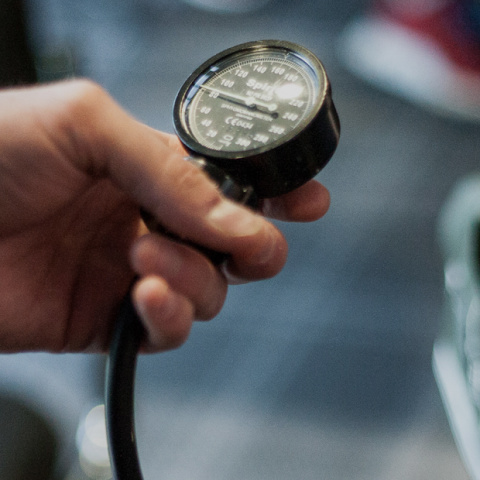Today the National Institute for Health and Clinical Excellence (NICE) have released their new Clinical Guidelines for the Management of Hypertension in Adults. These guidelines provide a range of updates concerning how people suspected of, or confirmed as suffering from hypertension should be diagnosed and managed. While these guidelines are perhaps more relevant to those working in primary healthcare, health and fitness professionals should also have a basic understanding of such matters and consider reviewing these guidelines as part of their continuing professional development (CPD), especially if working in an exercise referral setting.
Hypertension is a chronic condition that is signified by consistently high blood pressure in excess of 140/90 mmHg. While this value represents the statistical onset of hypertension, it should be noted that there is no definitive point at which hypertension actually commences because blood pressure is normally distributed within the population. What is however clear is that an individual’s susceptibility to death from heart disease increases by around 7% for every 2 mmHg that systolic blood pressure rises. And the risk of death from a stroke increases by around 10% when systolic blood pressure rises by the same value.
Primary hypertension, which is sometimes called ‘essential hypertension’, is a form of elevated blood pressure in which the exact causes are largely unknown, although they are believed to be related to genetic factors which are worsened by lifestyle activities. Secondary hypertension is less common than primary hypertension and is usually the result of another underlying medical condition; such conditions may include sleep apnea, drug use, kidney disease, tumours, chronic use of steroid and thyroid-related issues.
In the UK, current statistics from the British Hypertension Society indicate that 31% of men and 26% of females are hypertensive, whilst NICE predicts that up to 40% of the adult population have the disease.
Below is a brief summary of some of the changes to NICE’s diagnosis guidelines:
1. Where the clinician’s (GP, nurse etc) blood pressure measurement is 140/90 mmHg or higher, ambulatory blood pressure monitoring (ABPM) should be offered to the individual to confirm the diagnosis of hypertension. This is a noninvasive method of measuring blood pressure over a 24-hour period, whilst the patient is in their own environment, thus providing a better representation of their actual blood pressure.
2. Many individuals are incorrectly diagnosed with hypertension because they suffer from a ‘white-coat effect’*. This causes a sharp spike in blood pressure at the point at which it is being measured because of anxiety and the temporary fear of assessment. In cases where ABPM is used to confirm hypertension, individuals who suffer from the ‘white coat effect’ are likely to be identified and unnecessary treatment avoided.
*The ‘white coat effect’ is defined by NICE in their 2011 guidelines as a discrepancy of more than 20/10 mmHg between the clinician’s average blood pressure measurement and that measured by ABPM at the time of diagnosis.
3. When ABPM is used to confirm a diagnosis of hypertension, it is important that at least 2 measurements per hour are taken during the individual’s normal waking hours (for example, between 08:00 and 22:00). The average value of at least 14 measurements should then be used to confirm any diagnosis of hypertension.
4. When using home blood pressure monitoring (HBPM) is used to confirm a diagnosis of hypertension, individuals should ensure that for each blood pressure recording, 2 consecutive measurements are taken, at least 1 minute apart and from a seated position.
HBPM should be recorded twice daily, preferably with 1 measurement in the morning and 1 measurement in the evening, and should continue for 4-7 days. Those using HBPM should discard any measurements taken on the 1st day and use the average value of all remaining measurements to confirm a diagnosis of hypertension.
For more information on these and other NICE guidelines, visit: www.nice.org.uk/guidance/. If you would like to review the full document, you can download it by clicking here


